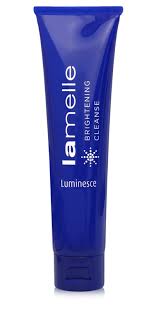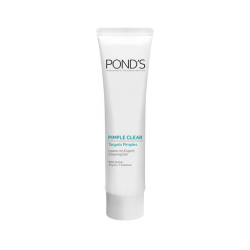
For most black women, oiliness, scarring and pigmentation are major concerns when it comes to their skin. And, black skin is more prone to pigmentation because of its increased levels of melanin. Fortunately, all these concerns can be treated to give you the flawless smooth skin you’ve always wanted.
Here’s how to treat blemishes and hyperpigmentation:
Hyperpigmentation and dark spots. Hyperpigmentation is an umbrella term for different skin discoloration concerns that are caused by various inherent and lifestyle influences. It appears as darkened patches or spots on the skin, making it look uneven.
Different types and causes
- Melasma – This is common among women as it is brought on by hormone fluctuations and worsened by sun exposure. It is triggered by pregnancy, oral contraceptives and hormone therapies, making it difficult to treat.
Hero product – Eucerin Even Pigment Perfector Dual Serum, and Lamelle Luminesce Brightening Cleanse
Eucerin Even Pigment Perfector Dual Serum, R599, Lamelle Luminesce Brightening Cleanse, R240
SEE ALSO: Here’s how to protect your skin by applying sunscreen regularly
- Post-inflammatory hyperpigmentation (PIH) – Acne is a big contributing factor to PIH, but it can also be caused by any kind of skin trauma such as wounds or skin disorders. This causes inflammation, which in turn triggers the skin cells in the affected area to produce more melanin. That then forms pink, red or brown marks, and can be worsened by UV light.
Hero product – Eau Thermale Avene Cleanance SPF30 Sunscreen

Eau Thermale Avene Cleanance SPF30 Sunscreen, R175
- Solar lentigines (age or sunspots) – These are the most common types of hyperpigmentation, found in both men and women. Though the face is a prime spot for these patches, they’re also commonly found on the chest and hands – a dead giveaway of our age. It builds up over years of sun exposure and can be hard to treat as the damage lies in the deep layers of the skin.
Hero product – NIVEA Hyaluron Cellular Filler Anti-spot Serum Treatment

NIVEA Hyaluron Cellular Filler Anti-spot Serum Treatment, R325
SEE ALSO: 3 ways to get rid of dark spots
How to treat it
Sun protection is the most significant step you can take to prevent hyperpigmentation.
Skincare expert Prof Dr Susan Taylor advises that you treat existing hyperpigmentation with superficial chemical peels (glycolic or salicylic acid), laser, microneedling and microdermabrasion.
All about blemishes
Blemishes are any type of marks, discoloration and spots that appear on the skin. They are caused by viruses, infections, genetics, sun exposure and clogged pores. They come in different types, such as acne (blackheads, whiteheads and pimples), pustules (pus-filled bumps) and nodules (collection of tissue such as warts or skin tags). Their colour can help you understand the cause.
- Red – These include pimples, cold sores and allergic reactions.
- Brown – Skin cancers such as malignant melanoma can look brown or black.
- White – Whiteheads (raised, round blemish with a milky-white cover) and other fungal infections.
How to treat them
You can treat blemishes by using products that are specifically formulated for them or home remedies that include aloe vera, lemon juice, egg whites and shea butter. Skincare products that contain salicylic acid, vitamin A and gentle chemical exfoliators can improve and speed up the treatment of acne.
SEE ALSO: 4 steps to keeping your foundation looking flawless
Beauty editor’s tip: Cut open a fresh aloe vera leaf to extract the gel. Apply to your skin and leave for 15 minutes, and rinse off with water. Aloe vera boasts healing properties, which makes it ideal to add to your skincare regimen. It also has anti-inflammatory properties that help to soothe acne breakouts.
Hero product – Ponds Pimple Clear Leave-on Expert Clearing Gel, and R45.99 KIEHL’S Blue Herbal Spot Treatment, R365




